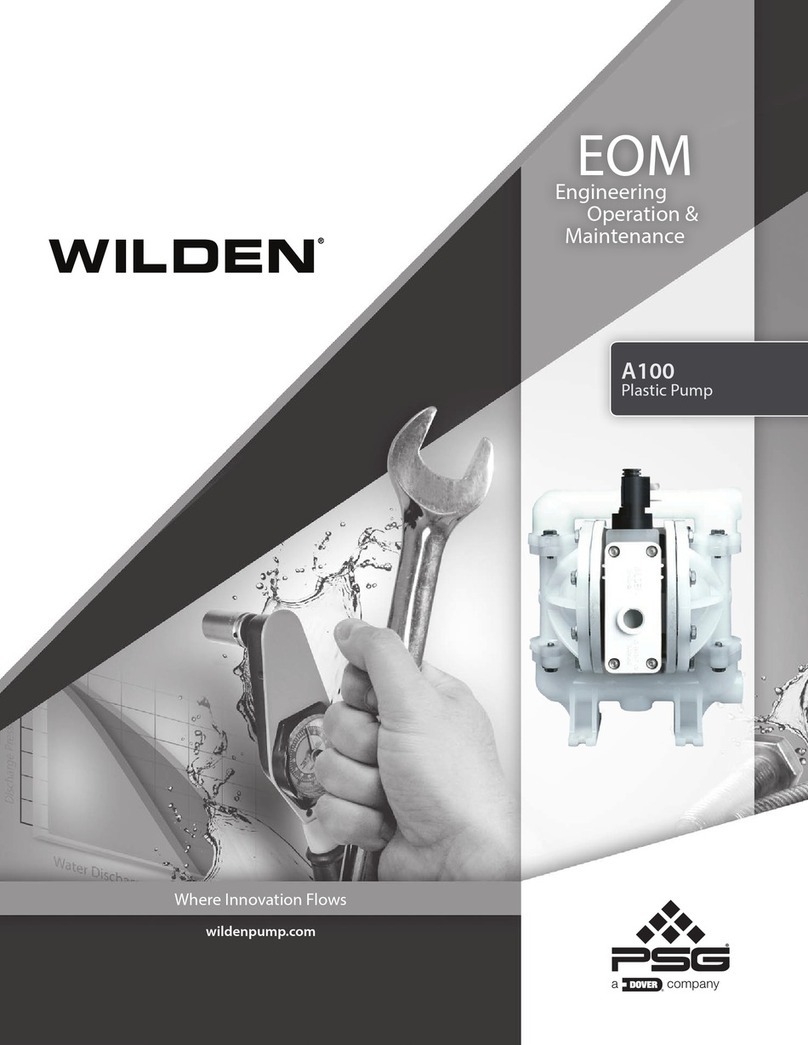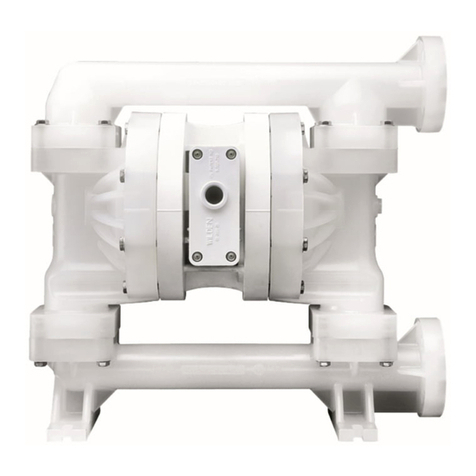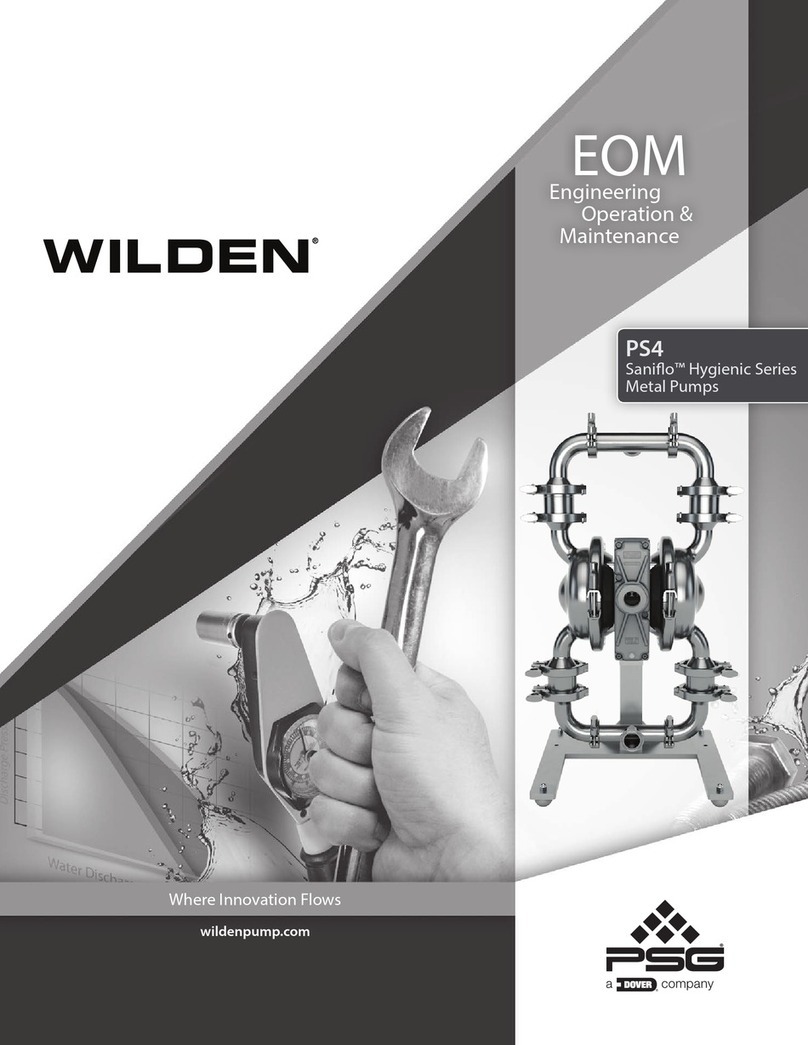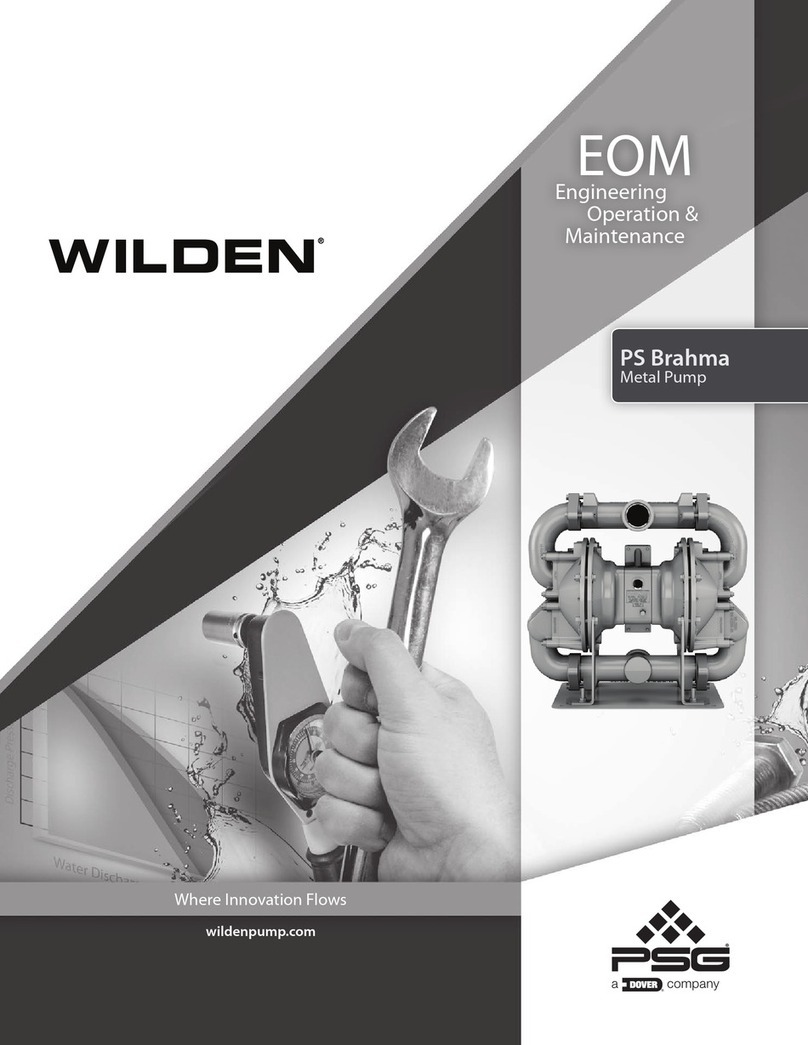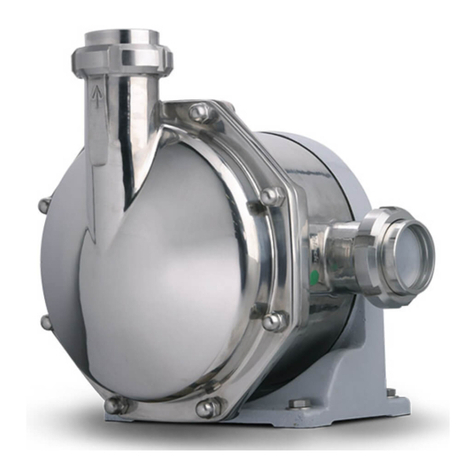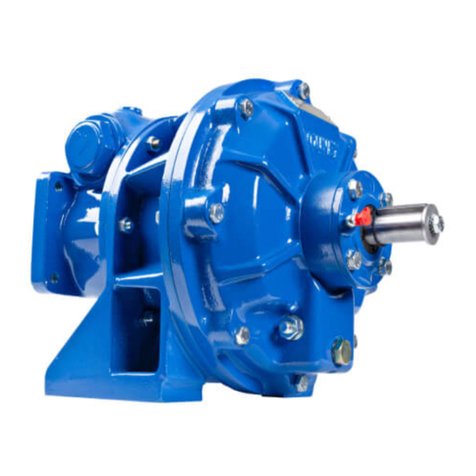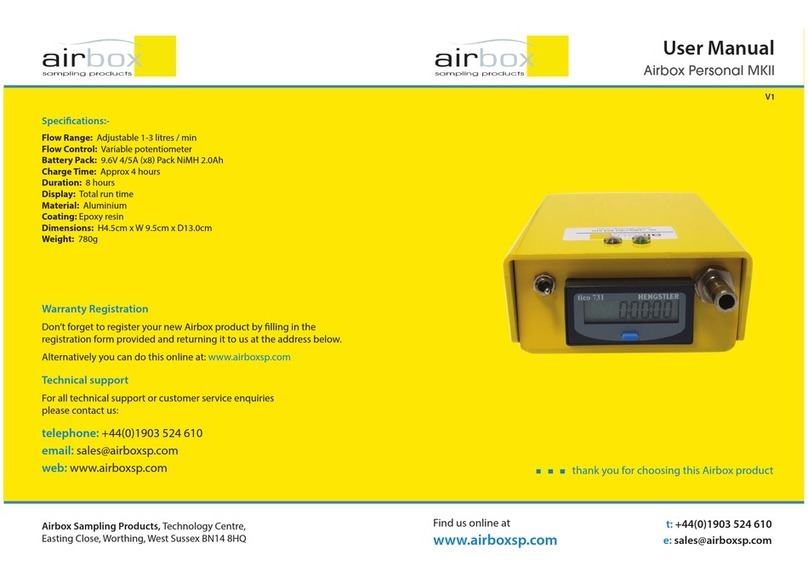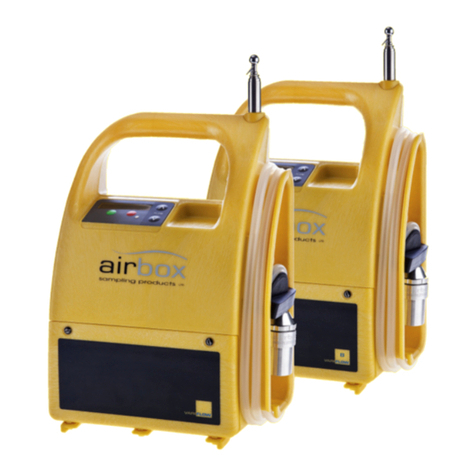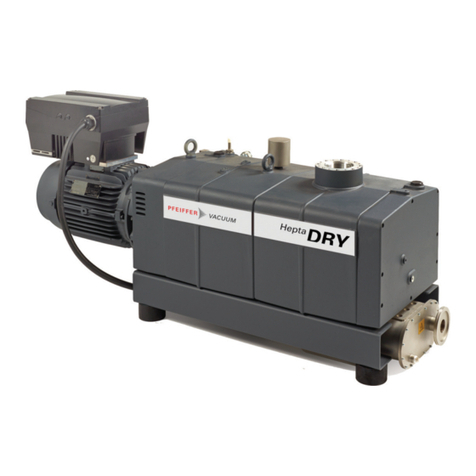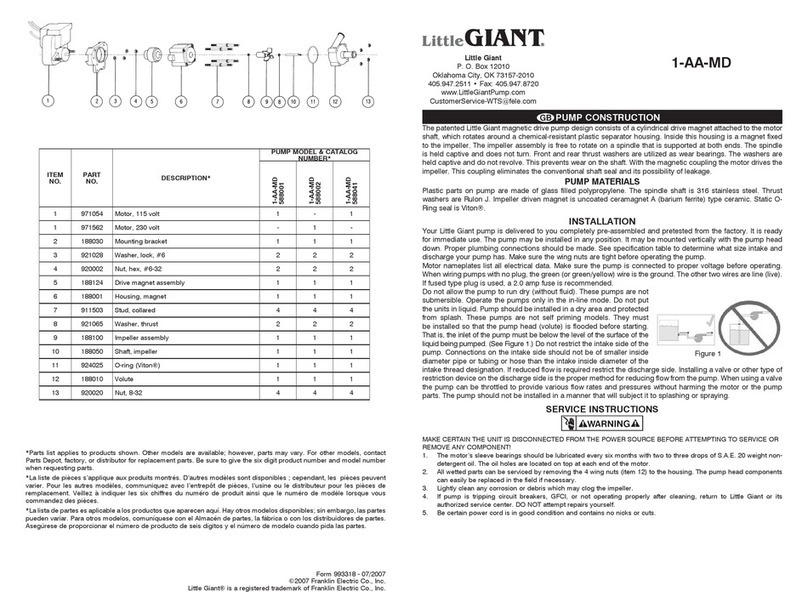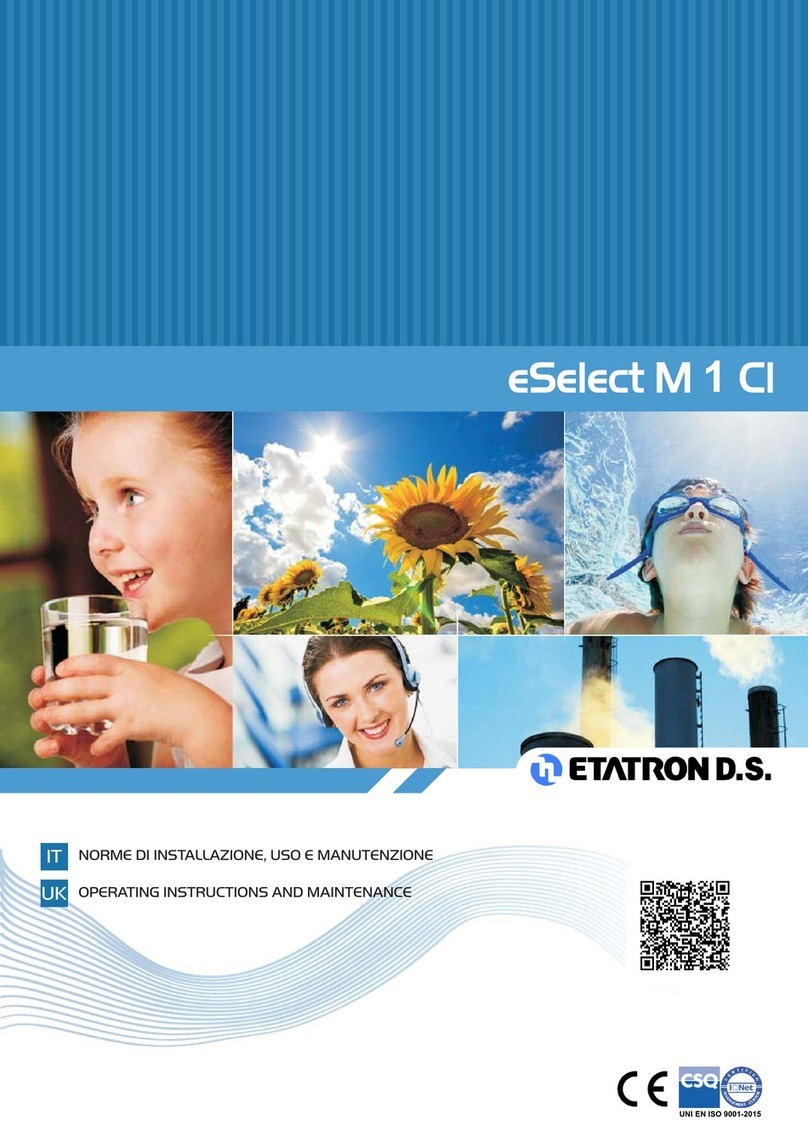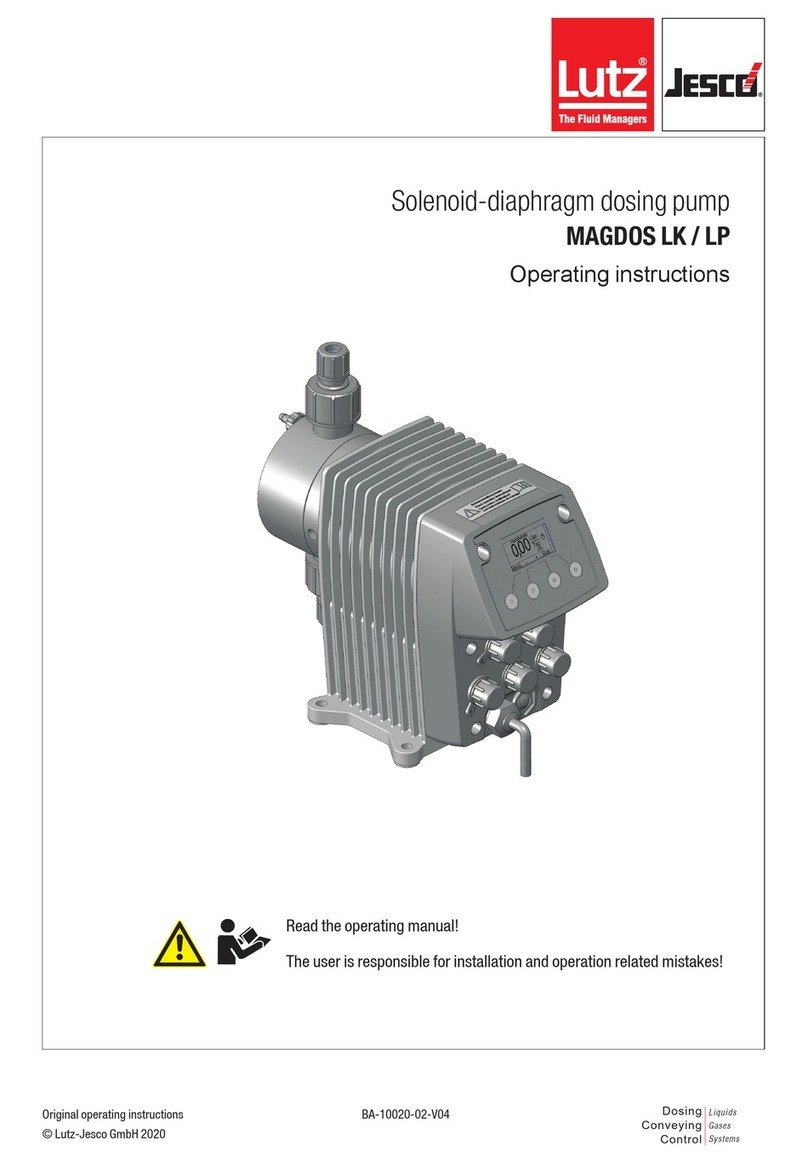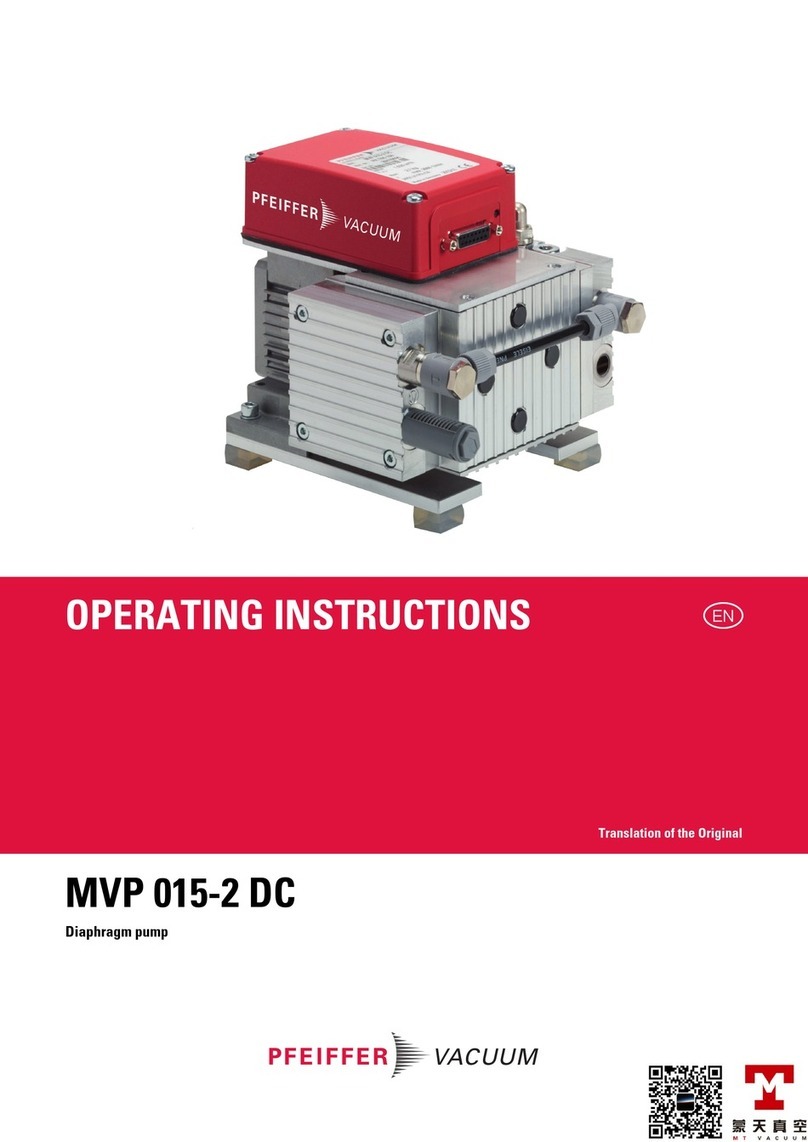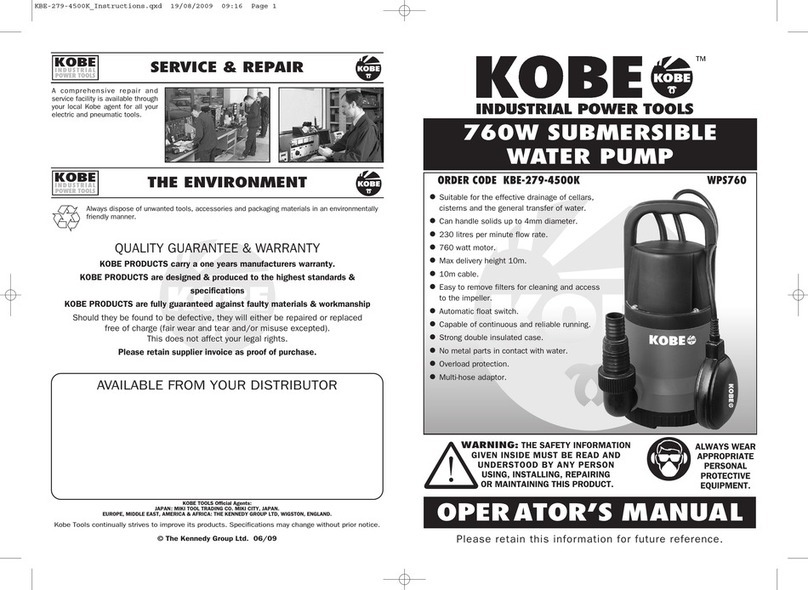
3WILDEN PUMP & ENGINEERING, LLCWIL-10280-E-04
INSTALLATION: Months of careful planning, study,
and selection efforts can result in unsatisfactory pump
performance if installation details are left to chance.
Premature failure and long term dissatisfaction can be
avoided if reasonable care is exercised throughout the
installation process.
LOCATION: Noise, safety, and other logistical factors usually
dictate that “utility” equipment be situated away from
the production floor. Multiple installations with conflicting
requirements can result in congestion of utility areas, leaving
few choices for siting of additional pumps.
Within the framework of these and other existing conditions,
every pump should be located in such a way that four
key factors are balanced against each other to maximum
advantage.
1. ACCESS: First of all, the location should be accessible.
If it’s easy to reach the pump, maintenance personnel will
have an easier time carrying out routine inspections and
adjustments. Should major repairs become necessary, ease
of access can play a key role in speeding the repair process
and reducing total downtime.
2. AIR SUPPLY: Every pump location should have an air line
large enough to supply the volume of air necessary to achieve
the desired pumping rate (see pump performance chart). Use
air pressure up to a maximum of 125 psig depending upon
pumping requirements.
For best results, the pumps should use an air filter, regulator,
and lubricator system. The use of an air filter before the pump
will ensure that the majority of any pipeline contaminants
will be eliminated. The use of a lubricant, suitable for the
application, helps perform a number of functions. Lubricants
reduce friction to minimize required shifting forces and
reduce wear. Lubricants provide a protective coating
against some forms of corrosion and contaminants. Wilden
suggests an oil with arctic characteristics (ISO 15-5Wt.)
This oil is chemically compatible with the center block
Glyd™ rings and has a low pour point to guard against
problems associated with low temperatures. The amount
of lubrication required is directly related to the amount of oil
introduced from the factory air system. We therefore suggest
that the lowest setting on the lubricator be utilized and then
increased as necessary.
Pump discharge rate can be controlled by limiting the volume
and/or pressure of the air supply to the pump. The use of a
needle valve installed at the air inlet to the pump is suggested
for this purpose. Pump discharge rate can also be controlled
by installing a valve in the discharge line of the pump when
the need to control the pump from a remote location exists.
When the pump discharge pressure equals or exceeds the air
supply pressure, the pump will stop; no bypass or pressure
relief valve is needed, and pump damage will not occur.
When operation is controlled by a solenoid valve in the air
line, a three-way valve should be used. Pumping volume can
be set by counting the number of strokes per minute.
A muffler installed on the the pump’s air exhaust will give
quiet exhaust. Sound levels are reduced below OSHA
specifications using a Wilden muffler.
3. ELEVATION: Selecting a site that is well within the pump’s
suction lift capability will assure that loss-of-prime troubles
will be eliminated. In addition, pump efficiency can be
adversely affected if proper attention is not given to elevation
(see pump performance chart).
4. PIPING: Final determination of the pump site should
not be made until the piping problems of each possible
location have been evaluated. The impact of current and
future installations should be considered ahead of time to
make sure that inadvertent restrictions are not created for
any remaining sites.
The best choice possible will be a site involving the shortest
and the straightest hook-up of suction and discharge
piping. Unnecessary elbows, bends, and fittings should be
avoided. Pipe sizes should be selected so as to keep friction
losses within practical limits. All piping should be supported
independently of the pump. In addition, it should line up
without placing stress on the pump fittings.
Expansion joints can be installed to aid in absorbing the forces
created by the natural reciprocating action of the pump. If the
pump is to be bolted down to a solid foundation, a mounting
pad placed between the pump and foundation will assist in
minimizing pump vibration. Flexible connections between
the pump and rigid piping will also assist in minimizing
pump vibration. If quick-closing valves are installed at any
point in the discharge system, or if pulsation within a system
becomes a problem, a surge suppressor should be installed
to protect the pump, piping and gauges from surges and
water hammer.
When pumps are installed in applications involving flooded
suction or suction head pressures, a gate valve should be
installed in the suction line to permit closing of the line for
pump service.
INSPECTIONS: Periodic inspections have been found to
offer the best means for preventing unscheduled pump
downtime.
Individuals responsible for checking and maintaining
lubrication levels in the pumps should also check for any
abnormal noise or leakage. Personnel familiar with the
pumps’ construction and service should be informed of any
abnormalities that are detected.
RECORDS: When service is required, a record should be
made of all necessary repairs and replacements. Over a
period of time, such records can become a valuable tool for
predicting and preventing future maintenance problems and
unscheduled downtime. In addition, accurate records make
it possible to identify pumps that are poorly suited to their
applications.
Section 4
SUGGESTED OPERATION & MAINTENANCE



















